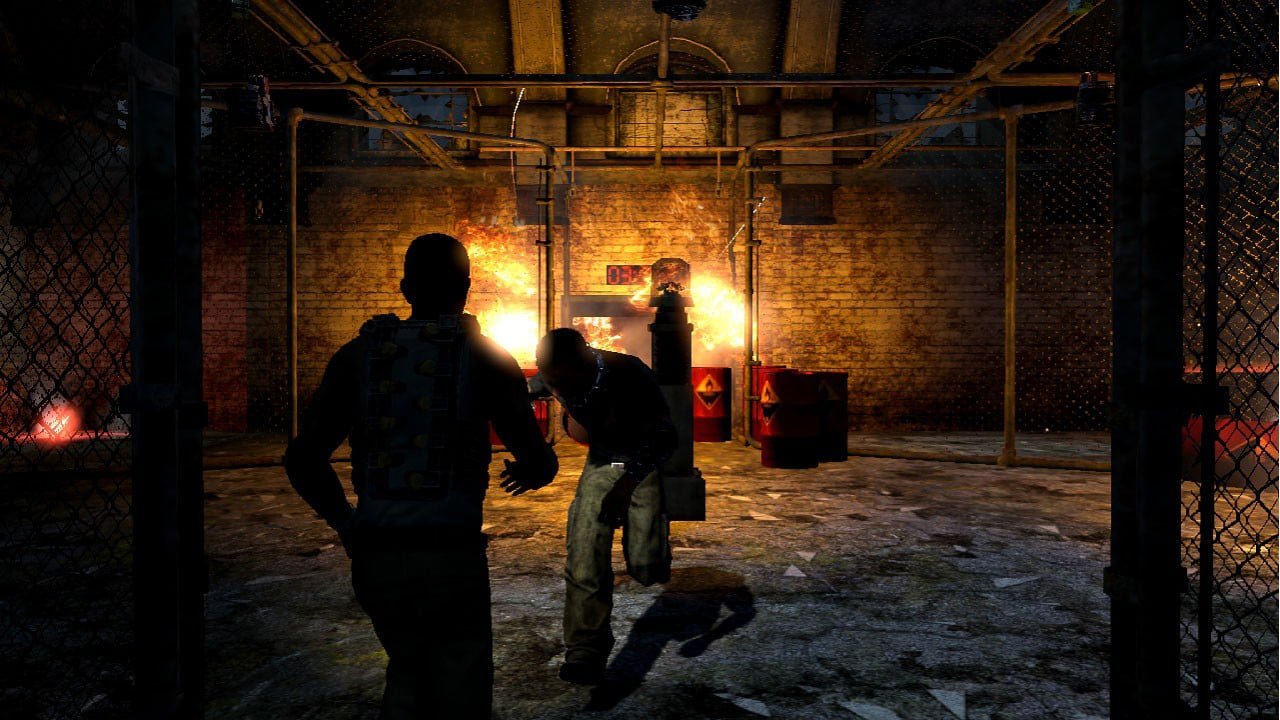When the Saw franchise landed in the hands of Konami, a lot of people wondered how the publisher would handle the intellectual property when some said it was in direct competition with their own Silent Hill series. Konami said they didn’t consider the two to be in competition and they were right; Silent Hill has nothing to worry about from this inferior series. Saw II: Flesh & Blood is a sequel to last year’s Saw: The Video Game, and concerns itself with the moral transgressions of Michael Tapp, son of David Tapp, better known as Danny Glover from the original film. In this torture-porn adventure, Michael is kidnapped by Jigsaw and put through the paces of a series of sadistic traps in order to discover why his father apparently shot himself in the head. It’s a promising premise that is ultimately let down by significantly flawed game design.
On the technical front, Saw II is competent. The graphics while never being amazing, still manage to work in interesting detail thanks to the industrial gothic design of the environments. Lighting is a bit on the iffy side, but the game doesn’t suffer much in the way of screen tear, pop up or frame rate issues. The sound is similarly workable, with a similar industrial aesthetic appearing in the music. Where it all falls apart is when you sit down and actually try to play the game.
Saw II’s chief problems lie in repetition, and confusion on the part of the developers between the concepts of “challenging” and “unfair.” For a game largely reliant on the adventure style of play, there is far too much re-use of puzzles. Players will find themselves going through variants of re-wiring circuits to open locked doors, picking locks, and playing games involving stepping on the right illustrated panel, memory matching games, and rotating colored knobs in order to complete circuits. When a game stretching several hours incessantly repeats six of seven basic puzzle mechanics, an overwhelming sense of monotony is hard to avoid.
The game also frustrates players by relying on puzzles that have a bizarre internal logic that harkens back to the early 80s of the adventure genre, when certain puzzle solutions only made sense if you were a particular person, at a particular time of his life with a particular mindset. This is compounded by the addition of “tension” to the puzzles by often putting in a timer or other requirements intended to force players into failure so that they can go back to the nearest checkpoint—which is often not near enough—and start the whole thing over again. The various complications added onto the solving of puzzles is clearly meant to create a greater sense of urgency, but the end result is simply an arbitrary injection of frustration to force players to repeatedly replay the puzzles. There’s also some combat in the game, but unlike the first, combat is entirely driven by quick time events, making it both easy and redundant.
That’s not to say the game is a completely lost cause. For fans of the films, there’s definitely some interest here, as genuine inventiveness has gone into Jigsaw’s usual gimmick of ornate torture devices that some reflect the personal issues of the people they are inflicted on, and some elements of the both the previous game and the various film characters actually opens up in the form of files and recordings for diligent players willing to explore. But just when the fan service or gameplay threatens to become truly interesting, the problematic design and mechanics always manage to swoop in and snatch defeat from the jaws of victory. It’s really only recommended for an absolute fan of the movies who doesn’t care at all about gameplay issues. For actual gamers however, it’s largely a failure with a few interesting moments scattered about here and there.






